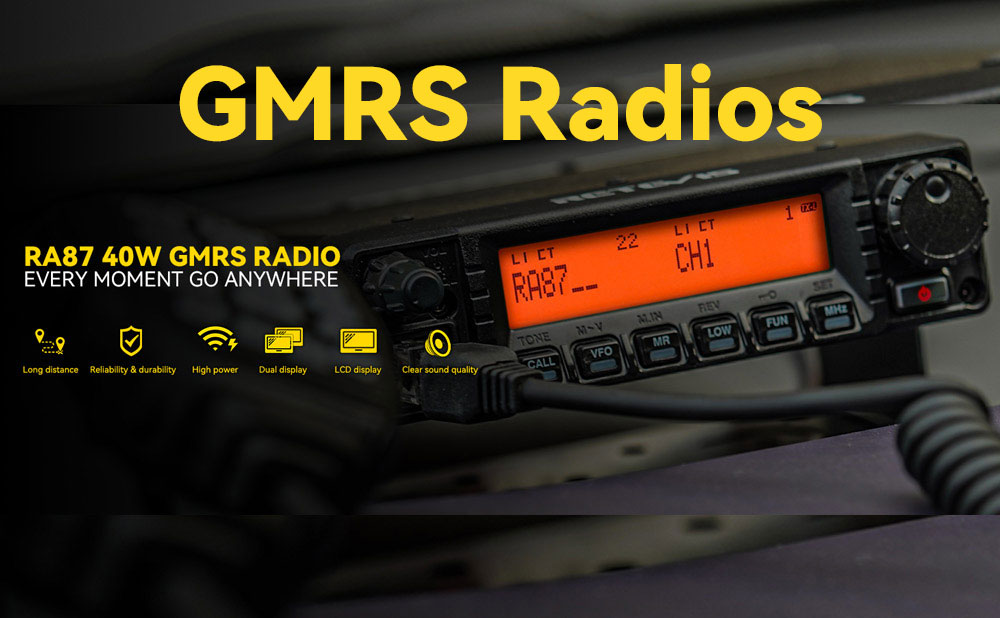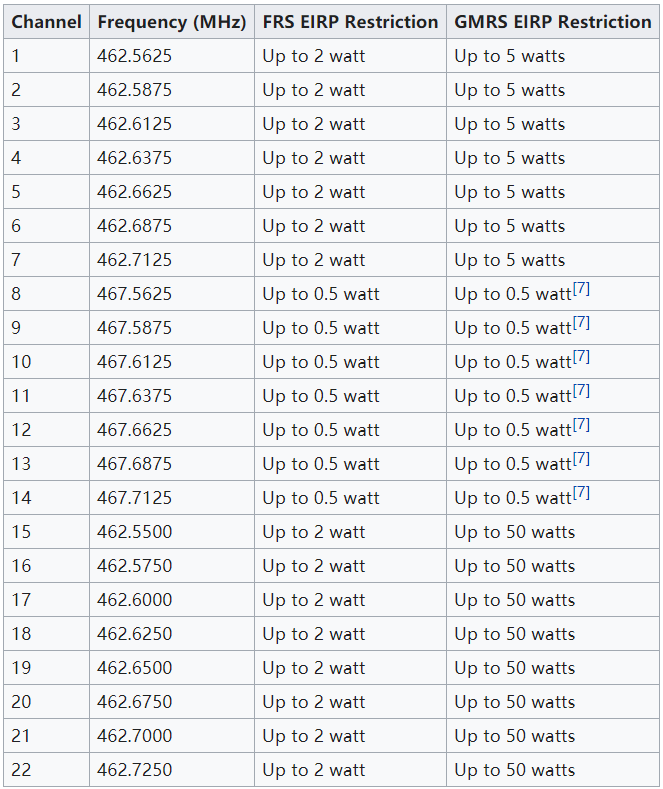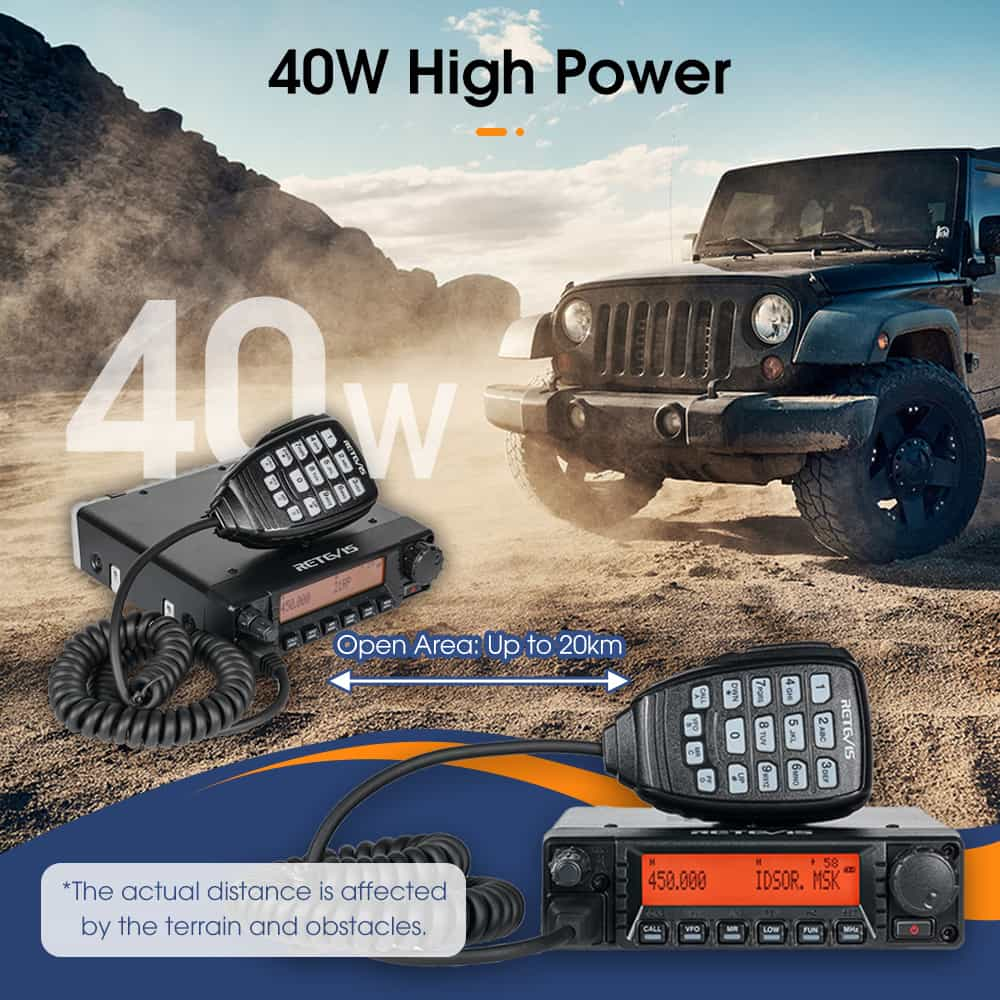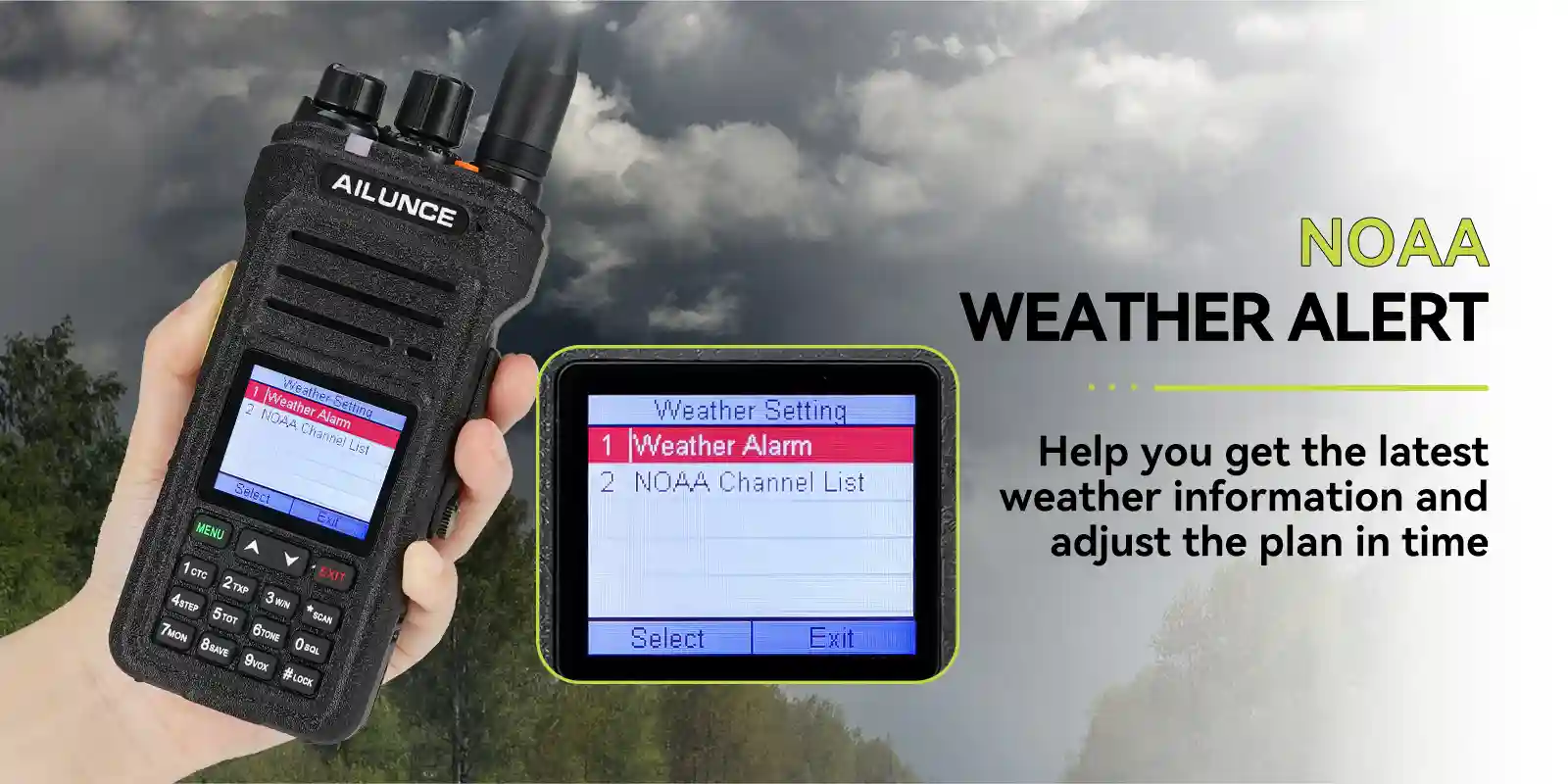Everything You Want to Know about GMRS Radios

Everything You Want to Know about GMRS Radios
GMRS (General Mobile Radio Service) radios are a popular choice for communication among families, outdoor enthusiasts, and small businesses. These radios provide a reliable means of communication over moderate distances and are particularly useful for activities like hiking, camping, and neighborhood coordination. This guide will introduce you to the basics of GMRS radios, their features, usage, and compliance with FCC regulations in the United States.
What is GMRS radio?
Known as “Class A Citizens Band" while renamed by FCC in 1987, GMRS stands for General Mobile Radio Service, using the same frequency band as FRS's (462-467 MHz). The difference is that GMRS radios have designated channels within those frequencies that aren't available to FRS radios. Its use is covered by FCC Part 95, but requires a license to operate. According to the latest FCC rules, a personal GMRS license costs $35 (The new $35 GMRS and Amateur license application fees go into effect April 19, 2022!) and can be obtained online at https://www.fcc.gov/wireless/universal-licensing-system
GMRS is a licensed radio service that operates on UHF (Ultra High Frequency) frequencies, specifically in the 462 and 467 MHz range. GMRS radios are more powerful than FRS (Family Radio Service) radios, offering extended range and better performance in various environments.
How powerful is GMRS radio?
Handheld GMRS units can put out up to 5 Watts of power, although 4-Watt handhelds are more common. While fixed-base stations can use up to 50 Watts on most frequencies, they are restricted to 5 Watts when communicating on the FRS channels. Repeater stations are allowed and can transmit as high as 50 Watts. Both fixed-base stations and repeaters can only transmit on the lower “462” frequencies, while handhelds can operate on any GMRS frequency.
That means that a GMRS radio can have all the same capabilities as an FRS radio in addition to special channels that FRS can’t access, and the option to extend the range of the product.
GMRS gear can include removable antennas, making it simple to use a handheld with a car mount or stationary antenna. Combined with the ability to use repeaters, GMRS can be used to communicate over considerable distances. If you’re looking for power and range with GMRS, check out Radioddity's best GMRS radios.
Key Features of GMRS Radios
Longer Range: Compared to FRS radios, GMRS radios can transmit over longer distances due to their higher power output, often reaching up to 5-10 miles in open areas and even more when using repeaters.
Repeater Capability: GMRS radios can access repeaters to extend their range. Repeaters are stations that receive and retransmit signals, significantly increasing communication distances.
Multiple Channels: GMRS radios have access to 22 channels, with channels 1-7 shared with FRS but at higher power levels, and channels 15-22 exclusively for GMRS. Channels 8-14 are limited to FRS power levels.
Privacy Codes: Many GMRS radios include privacy codes (CTCSS/DCS), which help minimize interference from other users on the same channel by filtering out unwanted signals.
Weather Alerts: Some GMRS radios are equipped with NOAA weather alert capabilities, providing real-time weather updates and emergency alerts.
Durability and Waterproofing: Many models are built to withstand tough conditions, with features like waterproofing and rugged construction, making them suitable for outdoor adventures.

Getting Started with GMRS Radios
Obtain a License: In the United States, you need an FCC license to operate GMRS radios. The license covers your entire family and is valid for ten years. No exam is required; you can apply directly through the FCC's website.
Choose the Right Equipment: There are various GMRS radios available, from handheld units to mobile and base station models. Popular options include the Retevis HA1G and the Retevis RA87. Consider your specific needs when selecting a radio.
Understand the Channels: GMRS radios use 22 channels, with channels 1-7 shared with FRS but at higher power levels, and channels 15-22 exclusively for GMRS. Channels 8-14 are limited to FRS power levels and are not recommended for GMRS use.
Operating Your GMRS Radio
Programming and Using Frequencies: Some GMRS radios allow you to program frequencies and use repeater channels for extended range. Ensure you understand how to program your radio and utilize repeaters effectively.
Basic Communication Protocols: When communicating, use clear and concise language. Identify yourself with a call sign (if applicable) and state your message. For example, "This is GMRS-1234, calling anyone on channel 20."
Emergency Use: In emergencies, GMRS can be a vital communication tool. Follow established emergency communication protocols and use designated emergency channels when necessary.
Tips for Effective GMRS Use
Join a GMRS Community: There are numerous GMRS groups and networks where you can connect with other users, share experiences, and gain valuable insights.
Practice Regularly: Familiarize yourself with your GMRS radio's features and practice using it in different scenarios to build confidence and proficiency.
Stay Updated: Keep up with FCC regulations and updates to ensure you are operating within legal guidelines and making the most of your GMRS radio.
Conclusion
GMRS radios are an excellent choice for reliable and effective communication in various scenarios, from family outings to emergency situations. By obtaining the necessary FCC license, choosing the right equipment, and learning the basics of operation, you can harness the full potential of GMRS radios. Remember to use your GMRS radio responsibly and in accordance with FCC regulations.








